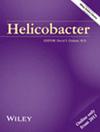The Optimal Age of Helicobacter pylori Screen-and-Treat for Gastric Cancer Prevention in the United States
Abstract
Background
Recent American College of Gastroenterology (ACG) guidelines recommend screening and eradicating Helicobacter pylori (H. pylori) in high-risk racial groups to prevent gastric cancer (GC), but do not provide guidance on the age to screen. We aimed to determine the optimal age for H. pylori screen-and-treat.
Materials and Methods
We developed a new microsimulation model, MISCAN-gastric, which was calibrated to SEER incidence and clinical studies on the natural history of GC. One-time screen-and-treat at ages 20–65 was compared to a no-screening scenario in terms of cumulative incidence reduction, number needed-to-screen (NNS) and number needed-to-treat (NNT) to prevent one GC case. The NNS represents the number of individuals that require testing to prevent one GC case, while the NNT reflects the number requiring treatment. The optimal age was investigated for a high-risk population subgroup (non-Hispanic [NH] Black males) and compared to other subgroups.
Results
Without screening, 332 noncardia GC cases occurred in a population of 100,000 NH Black males. H. pylori screen-and-treat reduced cumulative incidence by 43% when performed at age 20, but only by 5% when performed at age 65. The NNS was lowest at age 30 and increased markedly at older ages. The estimated NNS for test-ages 20, 30, 40, and 65 were 645, 563, 769, and 5487, respectively. The NNT was lowest at the youngest age (261) and increased with age to 448 at age 40 and 3681 at age 65. The NNT and NNS were substantially higher in groups with lower GC risk: the optimal NNT was four times higher in NH White females compared to non-Hispanic Black males.
Conclusion
H. pylori screen-and-treat maximized population benefits when performed before age 40, emphasizing the need for early interventions. When performed at the optimal age, the benefits of H. pylori screen-and-treat may outweigh the harms for high-risk racial groups.


 求助内容:
求助内容: 应助结果提醒方式:
应助结果提醒方式:


